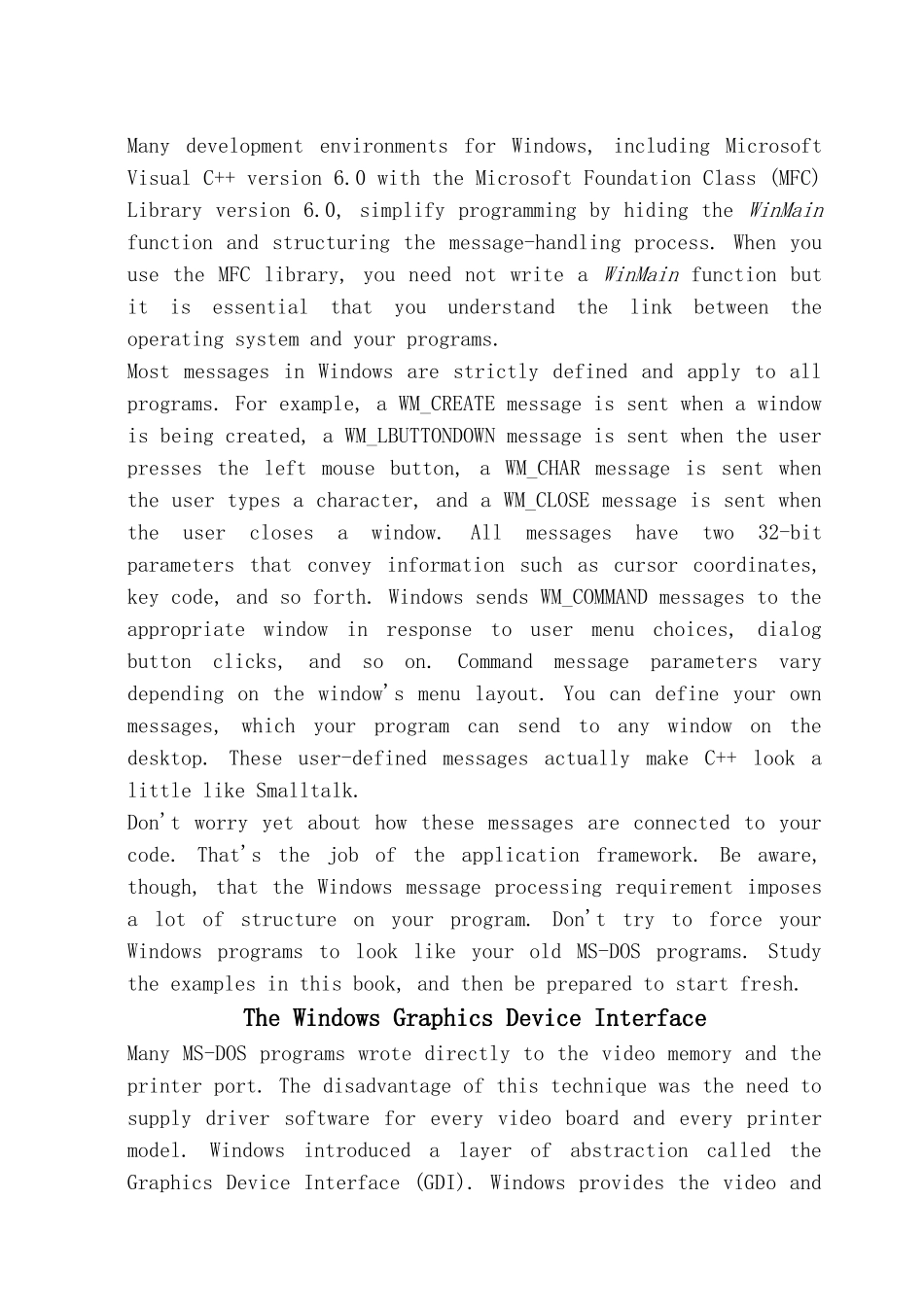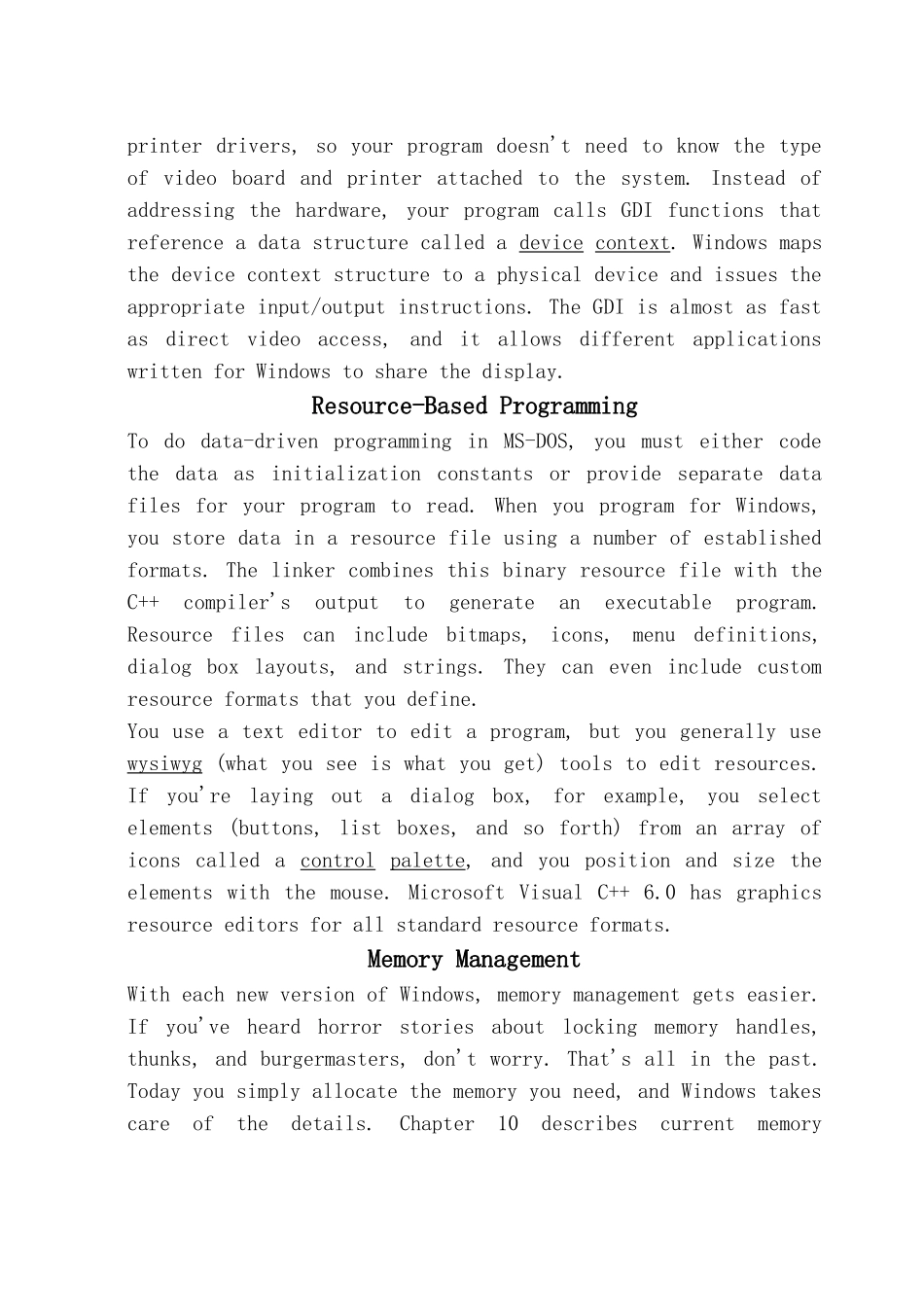附录 1 外文原文[8]The Windows Programming ModelNo matter which development tools you use, programming for Windows is different from old-style batch-oriented or transaction-oriented programming. To get started, you need to know some Windows fundamentals. As a frame of reference, we'll use the well-known MS-DOS programming model. Even if you don't currently program for plain MS-DOS, you're probably familiar with it. Message ProcessingWhen you write an MS-DOS-based application in C, the only absolute requirement is a function named main. The operating system calls main when the user runs the program, and from that point on, you can use any programming structure you want. If your program needs to get user keystrokes or otherwise use operating system services, it calls an appropriate function, such as getchar, or perhaps uses a character-based windowing library. When the Windows operating system launches a program, it calls the program's WinMain function. Somewhere your application must have WinMain, which performs some specific tasks. Its most important task is creating the application's main window, which must have its own code to process messages that Windows sends it. An essential difference between a program written for MS-DOS and a program written for Windows is that an MS-DOS-based program calls the operating system to get user input, but a Windows-based program processes user input via messages from the operating system. NOTEMany development environments for Windows, including Microsoft Visual C++ version 6.0 with the Microsoft Foundation Class (MFC) Library version 6.0, simplify programming by hiding the WinMain function and structuring the message-handling process. When you use the MFC library, you need ...


